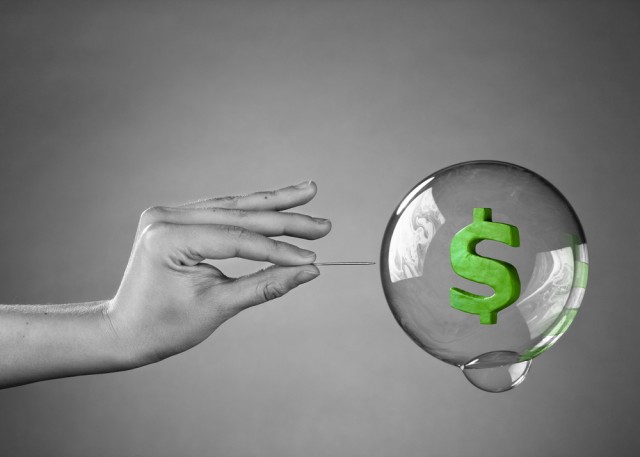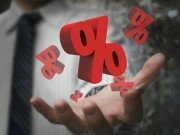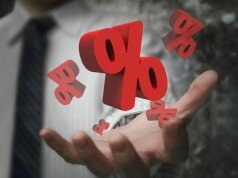
Podcast: |
As my listeners undoubtedly noticed, there’s a lot of drum-beat now on whether we are in yet another bubble. What’s triggered this, of course, are the new record highs set by major market indices. For example, the tech-heavy NASDAQ has again crossed the psychological benchmark of 5,000 and some in the tech industry are beginning to wonder if this is confirmation that we are in another tech bubble. Sure, as someone I interviewed last week said, there are selective pockets of froth in the market, particularly with smaller, less proven companies, while tech industry stalwarts like Microsoft appear to be trading closer to fundamental valuation metrics.
Oliver Leung of TechCrunch.com took it upon himself to compare tech industry valuations at the height of the dot-com bubble in March 2000 when the NASDAQ crossed the 5,000 mark in a hockey-stick like rise… to the NASDAQ of today which has breached the psychologically significant 5,000 level, albeit 15 years later.
The classic definition of a bubble is a rapid increase in asset prices arising from speculation or enthusiasm rather than intrinsic increases in value, with the sharp rise followed by an inevitable collapse in prices. Or, as someone succinctly put it, a bubble is a nightmare dressed up as a daydream!!
Why the NASDAQ is NOT a Bubble This Time Around
But if you look at Key Performance Indicators on the NASDAQ, you will see that we’re in far more stable territory now than we ever were back in the year 2000. As some of my listeners know, stock valuations are judged by their Price-to-Earnings ratio – which is the price you’re willing to pay today for a dollar of corporate earnings over the next several years. A high PE Ratio could indicate overvaluation, meaning the share price is expensive relative to the overall market and the company’s future earnings potential.
During the dot-com boom, the NASDAQ had a whopper PE Ratio of 152x… this time around, we are at a more sane PE ratio of 27x
So, on that ratio, here’s a glaring metric… during the dot-com boom, the NASDAQ had a whopper of a PE Ratio at 152!!! Wow… imagine that! Thankfully, this time around, we are at a more sane PE ratio of 27… so we’re nowhere close to the overinflated valuations of March 2000… but let me also point this out… a PE ratio of 27 is still well above the industry average of 19.1 – so clearly there is some froth in tech stocks and we could be in for a correction at some point – as many of my experienced investor-friends have also been telling me.
Here’s another related measure – it’s called the Price-to-Book Ratio and it simply compares a company’s stock price to the equity value per share, also called book value… think of book value as what a business has left over to distribute to shareholders after they liquidate all their assets and pay off all their liabilities such as borrowings, money owed to suppliers, etc. So, in 2000, stocks had a price-to-book ratio of almost 20… but today, that ratio is close to 2.4 – so more reassurance that we’re not in a bubble.
Also, 15 years ago, it was not uncommon for investors to cut checks to young entrepreneurs based on a slick pitch deck… only to watch it burn on a Super Bowl commercial. Today, technology investors are savvier, more organized and better equipped. More often than not, investors today demand paying and returning customers who are willing to pay for a good or a service, and want to come back for more. This intrinsic value was not prevalent during the dot-com bubble.
Also, savvy market gurus, such as Warren Buffett, famously sat out the dot com boom. People like Buffett compared trend lines of the NASDAQ to the Dow Jones Industrial Average and the S&P 500 back in 2000, and it was clear to them that the NASDAQ trend line rose sharply higher than other major market indices – and that was a big red flag. This time around, trend lines are more or less in sync with each other – they’re all on an upswing and much of that appears linked to rising corporate earnings at many U.S. companies.
Now… markets are irrational and corrections can and do occur. Some investors now see early signs of a bubble in the biotech sector which has experienced a rapid a growth rate of 500 percent over the past four years and has a PE ratio of 40 – well above typical averages that are in the mid to high teens. This sector was also singled out in the Federal Reserve’s recent Monetary Report – so I won’t be surprised if there is a bit of a pullback in this sector, specially for companies where future earnings fall short of Wall Street expectations – and punishment is swift and severe, with stock drops of 25% or more within a few days – and that’s a good, healthy, self-regulating aspect of our markets.
Slower Economic Growth on the Cards
So the current 2015 bull market is not indicative of a tech bubble… but the U.S. economy is unlikely to sustain growth at the same rate as before because of exogenous and endogenous reasons such as:
- Business Cycles with natural cyclical oscillations that occur every 5 years, on average.
- Global factors such as the unstable Eurozone economy and a steady contraction in China’s GDP which will hurt U.S. exports.
- The strong U.S. dollar which makes U.S. exports expensive for foreign buyers, and reduces repatriated foreign profits for U.S. multinationals such as McDonald’s which lost over a half billion dollars in currency translation last year. That’s a lot of (un)happy meals – if you get my drift!
- Interest Rates are another unknown with the Federal Reserve widely expected to raise rates by around 0.25 percent later this year – which really should not matter unless other data scare off bond investors and cause rates to rise sharply… which could make borrowing more expensive for consumers and businesses and have a cooling effect on the economy.
I think it’s fair to expect some sort of correction on shares that trade at valuations that are well above historical averages – the frothy stocks as I said, and take those winners off the table, and switch your money into more stable, reasonably valued businesses that will survive business cycles… and expect them to deliver slow but steady returns going forward.



















